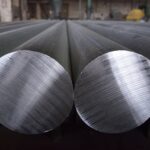AEROBAL “Focus on collection and sorting rates”
Closed can-to-can recycling loop does not bring best environmental and economic performance for aluminium aerosols, says AEROBAL.
Demands for increasing recycled material content in packaging and recycling in the sense of a closed product loop are gathering momentum in the industry.
The question is whether such a closed product loop recycling is under environmental and economic aspects advantageous for aluminium aerosols compared to a closed material loop approach.
The International Organisation of Aluminium Aerosol Container Manufacturers (AEROBAL) and the European Aluminium Slug Producers group (ASP), organised under the umbrella of the German Aluminium Association (GDA), commissioned the Swiss research institute Carbotech to investigate into this subject.
Multitude of alloys and scarcity of recycled aluminium are major challenges
Concerning the framework conditions, the study shows that there is not just one aluminium specification but different aluminium alloys for the production of tailor-made aluminium products with different properties. After recycling, the use of the recycled material can be more appropriate than primary aluminium for certain aluminium applications, if already existing alloying elements in the recycled aluminium support the required specifications.
Additionally, it has to be taken into account that today demand for recycled aluminium is much higher than supply. Roughly 25 percent of the global aluminium demand can be satisfied by recycled aluminium. Thus, a focus on the recycled content has no direct influence on the global environmental impacts but only on the distribution to the different applications.
Closed product loop for aluminium aerosols requires additional transportation, sorting and melting
Economically and environmentally speaking, the focus on a closed aluminium product loop in the overall global aluminium market need not be an advantage in itself. In specific cases where you get aluminium scrap with the needed properties without huge efforts, it could be beneficial. However, higher distances for scrap transportation, additional sorting and melting steps with ensuing higher material losses in a closed product loop system increase adverse environmental impacts.
Besides negative environmental effects, these system-related characteristics deteriorate the economic performance of a closed loop recycling system for high-purity aluminium aerosol cans, because it would lead to higher cost per container.
Efficient collection and sorting as prerequisite for successful recycling
According to Dr. Fredy Dinkel of Carbotech, “the best strategy is to focus on high collection and sorting rates to maximise the amount of aluminium that stays in the market in the sense of a closed material loop. Thus, recycling rates should be further increased because they sustainably reduce the environmental burden, irrespective of the application the recovered material will flow into.”
The EU Commission’s Circular Economy Action Plan amongst others aims at promoting extended producer responsibility systems in Europe. These measures also boost investments in sophisticated collection and recycling technologies ensuring a higher quantity and better quality of the sorted and recycled aluminium packaging. Since also consumer education is key for successful packaging collection and recycling, tailer-made campaigns throughout Europe could also contribute to better national recycling results.
All these efforts would contribute to efficiently closing the material loop of aluminium for utmost environmental and economic performance and convincing sustainability.








